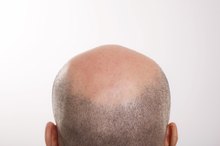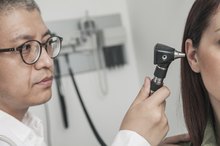Causes of Itching on the Face and Neck
Itchiness primarily involving your face and neck suggests a relatively short list of possible causes, compared to more generalized itching. Itchiness localized to these areas usually arises due to inflammation of the involved skin, which can develop for a variety of reasons. Some underlying causes represent short-term conditions that can usually be easily remedied. Other skin conditions that lead to itching of the face and neck are more chronic and require ongoing treatment.
If you are experiencing serious medical symptoms, seek emergency treatment immediately.
Contact Dermatitis
With contact dermatitis, skin directly exposed to an irritating or allergy-provoking substance becomes inflamed. This leads to an itchy red rash with either dryness and flaking or small blisters. Possible culprits for contact dermatitis on the face and neck include 3:
Seborrheic Dermatitis
Itchiness Behind the Ears
Learn More
Seborrheic dermatitis (SD) is the adult version of cradle cap, which occurs in infants. While cradle cap clears up during infancy, adult SD usually persists long term. The back of the neck along the hairline is often involved. With SD, the affected skin characteristically appears reddened with superficial flaking, much like severe dandruff. The affected areas are also typically itch, sometimes intensely. SD can develop at any age from adolescence through adulthood, with the peak age of onset from 40 to 60. The cause of SD remains poorly understood but overgrowth of a fungus called Malassezia appears to play a key role. Treatment typically involves use of topical antifungal and anti-inflammatory medicines. Oral medications might be needed if topical therapy fails.
- Seborrheic dermatitis (SD) is the adult version of cradle cap, which occurs in infants.
- With SD, the affected skin characteristically appears reddened with superficial flaking, much like severe dandruff.
Acne
While pimples are the hallmark of acne, many people with this skin condition also experience itchiness. According to a 2009 review article published in the international medical journal "Acta Dermato-Venereologica," research indicates that 36 to 70 percent of people with mild to moderate acne experience intermittent itchiness 6. Although acne most often affects the face, the neck is also frequently involved. Additionally, people with acne often develop skin dryness and associated itchiness due to excessive washing of the face, overuse of over-the-counter acne treatments, or as a side effect of prescription acne medication.
- While pimples are the hallmark of acne, many people with this skin condition also experience itchiness.
Ringworm
Skin Problems That Cause Eyebrow Loss
Learn More
Ringworm of the scalp, or tinea capitis, is a fungal infection that occurs most often in children but also sometimes affects adolescents and adults, who usually contract the infection from a child. The infection can spread from the scalp to the eyebrows and eyelashes, and causes scaly patches that often itch -- although some people do no experience this symptom. Hair loss frequently occurs in infected areas. Recommended treatment includes oral and topical antifungal medications and medicated shampoo. As ringworm is contagious, it's important to take precautions to avoid spread to others, such as:
- not sharing combs
- hairbrushes
- hair accessories
- hats
- Ringworm of the scalp, or tinea capitis, is a fungal infection that occurs most often in children but also sometimes affects adolescents and adults, who usually contract the infection from a child.
- The infection can spread from the scalp to the eyebrows and eyelashes, and causes scaly patches that often itch -- although some people do no experience this symptom.
Other Causes
- Atopic dermatitis (hereditary eczema)
- Psoriasis
- Hives
- Liver disease
- Chronic kidney disease
- Diabetes
- Thyroid disease
- Multiple sclerosis :
- Swelling of the face, lips and/or tongue
- Wheezing or difficulty breathing
- Generalized itchiness or hives
- Throat tightness or hoarsness :
Related Articles
References
- American Family Physician: Diagnosis and Management of Tinea Infections
- Merck Manual Professional Version: Contact Dermatitis
- American Academy of Dermatology: Saving Face: Dermatologists Helping Patients Identify Source of Facial Allergic Contact Dermatitis
- Journal of Clinical and Investigative Dermatology: Seborrheic Dermatitis and Dandruff: A Comprehensive Review
- Acta Dermato-Venereologica: Epidemiology of Itch: Adding to the Burden of Skin Morbidity
- Journal of Investigative Dermatology Symposium Proceedings: Clinical Diagnosis of Common Scalp Disorders
- American Family Physician: A Diagnostic Approach to Pruritus
Writer Bio
Shannon Marks started her journalism career in 1994. She was a reporter at the "Beachcomber" in Rehoboth Beach, Del., and contributed to "Philadelphia Weekly." Marks also served as a research editor, reporter and contributing writer at lifestyle, travel and entertainment magazines in New York City. She holds a Bachelor of Arts in literature from Temple University.









